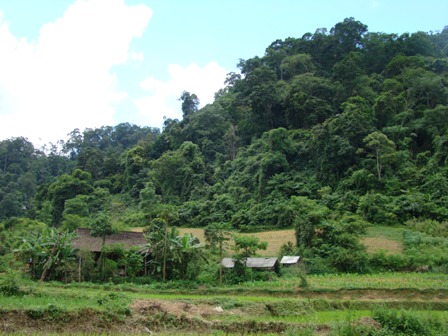As the UN Biodiversity Conference (COP 16.2) convened last week…

Support designation of sacred forests as protected areas in Vietnam
PanNature is working to gain legal recognition of thousands of sacred forests in Vietnam as part of the national protected area system through revisions to the Forest Protection (2017) and Development Law (FPDL) and Biodiversity Law (2018). Hoang Xuan Thuy, vice director of the NGO PanNature, which is headquartered in Hanoi, a member of the Vietnam Union of Sciences and Technology Associations and part of the ICCA Consortium/ Global Forest Coalition, of group PanNature seeks help in ensuring that all sacred forests in Vietnam, and not only large ones, will be recognized in new laws enabling sacred forests to be designated as part of the national protected area system. This article is seeking your input and advice.
This is an urgent issue. On 15 November 2017 the Vietnam national assembly adopted a forestry law which includes a provision on sacred forests. However, the issue of the size of sacred forests relative to biodiversity conservation value is being raised by some in government who are dubious about recognizing small sacred forests. It would help advocates of recognizing all sacred forests, regardless of size, to be able to cite scientific research testifying to the biodiversity conservation value of small sites.
PanNature has been conducting an assessment. Their initial findings show that there are many sacred forests in Vietnam which still exist and are well-managed by local communities. In particular, most of the villages and hamlets in the mountainous northern province still maintain sacred forests. But these are often very small, with an area of 2-3 hectares or less, and many of them are located in the middle of rice fields without connectivity with other forests. When PanNature reported the results of this assessment to policy makers, they asked whether the small isolated sacred forest have a role in the biodiversity conservation. Colleagues in PanNature are thus looking for academic studies and other materials that provide support for recognizing the biodiversity conservation value of small sacred forests.
There is a review of the scientific literature published in 2010 as Chapter 2 “Conservation of Biodiversity in Sacred Natural Sites in Asia and Africa: A Review of the Scientific Literature” in Sacred Natural Sites: Conserving Nature and Culture. Is there more recent work you are aware of that Pan Nature could cite to bolster their advocacy for the protection of all sacred forests, regardless of size? It also seems that if other countries have taken action to recognize the conservation value of small sacred forests that this could be used to support efforts in Vietnam. Do you know of examples? What about recognition of sacred forests in Benin as protected areas, which was facilitated by a GEF medium-sized project: “Incorporation of Sacred Forests into the Protected Areas System of Benin”, which may include small sites: these sacred sites are primarily small (70% of the country’s 2940 sacred forests are smaller than 1 ha). For example, Benin’s protection of sacred forests does not appear to place any minimum size limit on the recognition of sacred forests as a protected area. I wonder if in practice there is now a record of small forests being recognized as protected areas? Here is an Benin-Sacred-Forest-law-final-English-version-2014.
As additional background, PanNature has worked with other stakeholders, particularly with local communities and policy makers at national and subnational levels to promote the recognition of collective right of a community over forests. As a result religious forests (spiritual/ sacred forests) were listed as a sub category of special use forest (landscape protection area) and community watershed protection fores and have been recognised as a category of protection forest under the new Forest Law of Vietnam (forests in Vietnam are divided into three categories: special use forest, protection forest and production forest). The new law will come into enforcement from 1/1/2019.
Source: CSVPA



